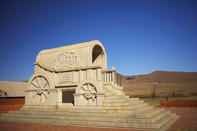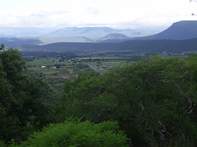The settlement of Weenen has quite a blood-stained history. It was once tribal land, ‘owned’ by the Zulu nation. They farmed cattle and hunted game in the area. European white settlers arrived in the area around the early 19th century, and they were met with hostility. The original residents were driven off their land and forcibly relocated elsewhere by the colonial government of the time, which led to a few battles between the Zulu warriors and white settlers.
In 1838, following the massacre of Voortrekker women and children by the Zulus, subsequent to the murder of the Voortrekker leader, Piet Retief, Weenen was laid out as a farming settlement. The massacre occurred next to the Ncome River and as a result of the fighting, the river turned red with the blood, and was henceforth called ‘Blood River’.
Other massacres followed in the vicinity and finally, survivors fled the site now referred to as Weenen, intent on regrouping and avenging the dead. Many of the battles that today typify the KwaZulu-Natal Battlefields took place around the area.

